Science of gut healthy heat
I. IBS Symptoms are caused by visceral hypersensitivity
When nerves around the gut become overly sensitive to normal stimuli, they trigger exaggerated signals to the brain that are perceived as pain or discomfort. This hypersensitivity can lead to altered gut motility and heightened perception of gut sensations, resulting in IBS flare-ups and other gastrointestinal symptoms.
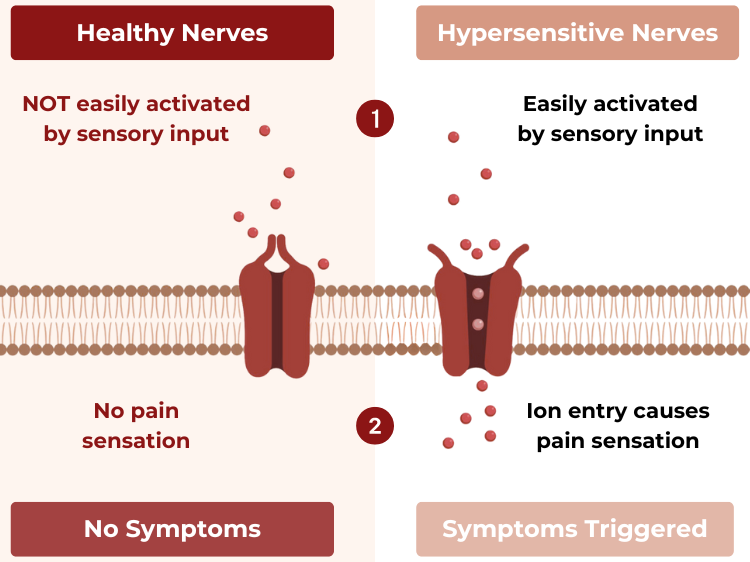
II. Building Gut Resilience is key to manage ibs symptoms long term
While restrictive dieting and supplement-reliance can reduce symptoms, these methods do not lesson our hypersensitivity to those symptoms. Building gut resilience by desensitizing the nerves back to a healthy state is the best long-term solution because it allows us to reintroduce the foods we love back into our lives.
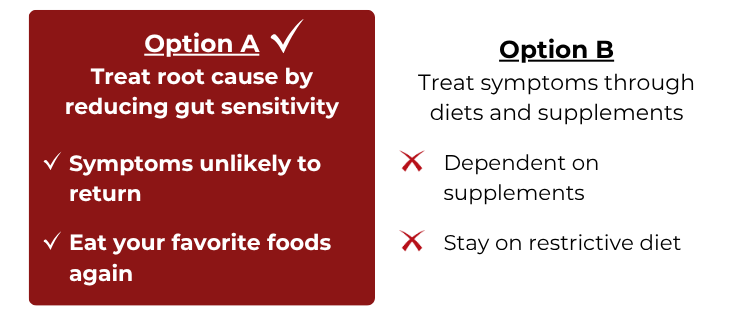
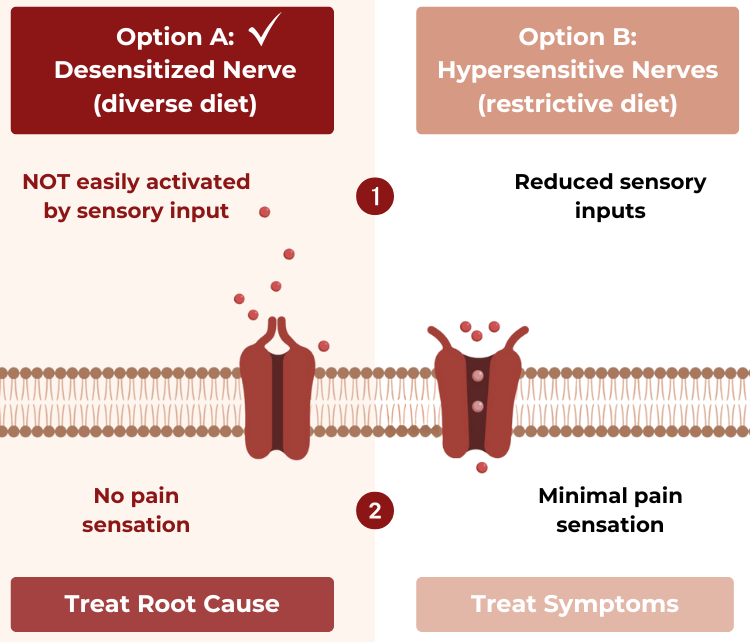
III. Capsaicin is clinically proven to reduce gut sensitivity in 6 weeks
Capsaicin, the natural compound in chili peppers, is widely used in pain creams like Icy-Hot for its desensitizing effects. Internally, however, it can initially trigger flare-ups by activating hypersensitive nerves. To counter this, we microencapsulated capsaicin in oleic acid—an omega-9 fat from avocado oil—creating a protective cushion that makes it gentler on sensitive guts and easier to tolerate long enough for clinical benefits to take effect.
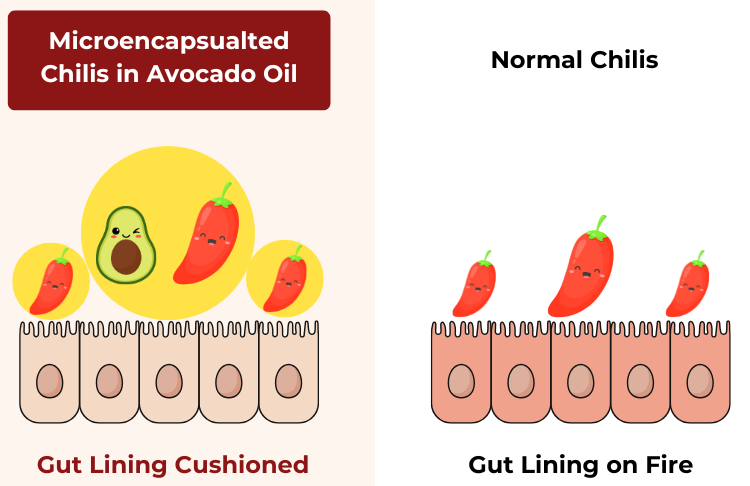

IV. Medicine, formulated with whole foods at the molecular level
Many gut supplements are whole foods synthesized to the molecular. Redbloom is whole foods formulated at the molecular level, to the clinical dosages. We use 15 clinically-backed whole ingredients - including organic lion's mane and organic MCT oil - that can be easily absorbed by our body.
Here's the real question:
How do we craft a product that's not only tastes the best and aligns with cultural expectations, but is also natural, healthy, and maintains these molecular principles, while factoring in temperature, pressure, and humidity limits?
We use AI!
Achieving gut-friendly spice is a Rubik's Cube problem - everything must balance from both a science and culinary perspective
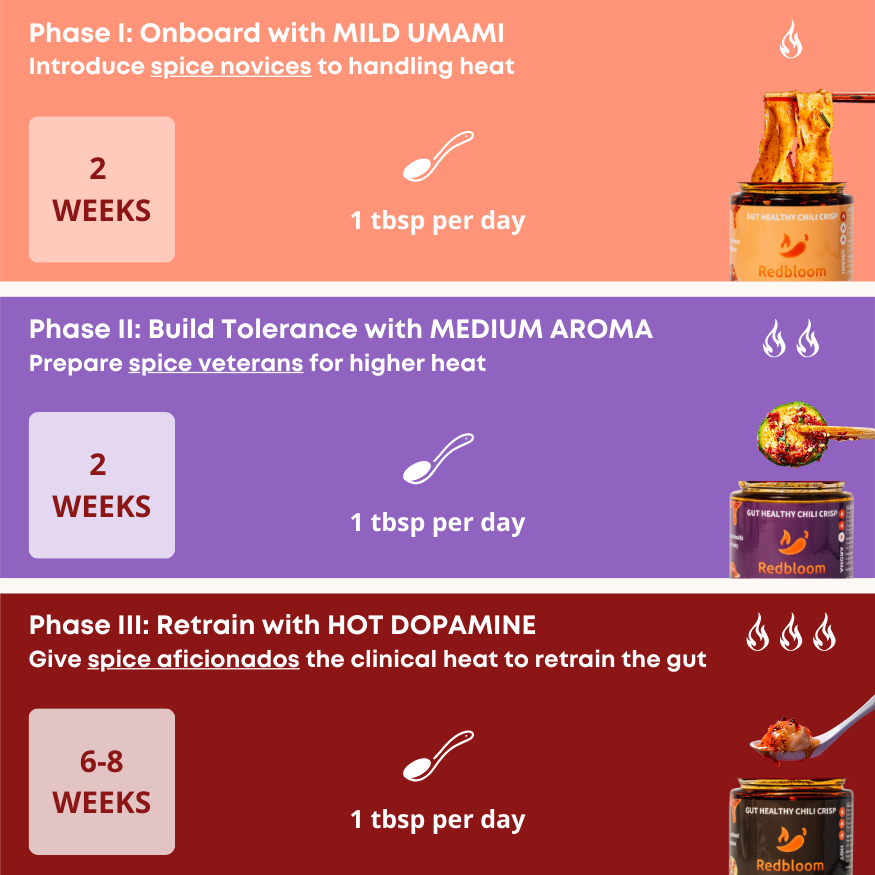
Science of Redbloom
Redbloom's AI Framework
Redbloom's AI framework serves to analyze and understand the molecular structure of various ingredients, their interactions, and the impact they have on health and flavor

Redbloom's AI Architecture
AI models are trained on real data and adjusted by expert perspectives and customer feedback. Redbloom has been through 4,000 iterations before achieving perfection

Thank you for coming to our Ted Talk!

Product
Heard Enough?
Get Redbloom

Empirical Study
Still Curious?
Dive Deeper
